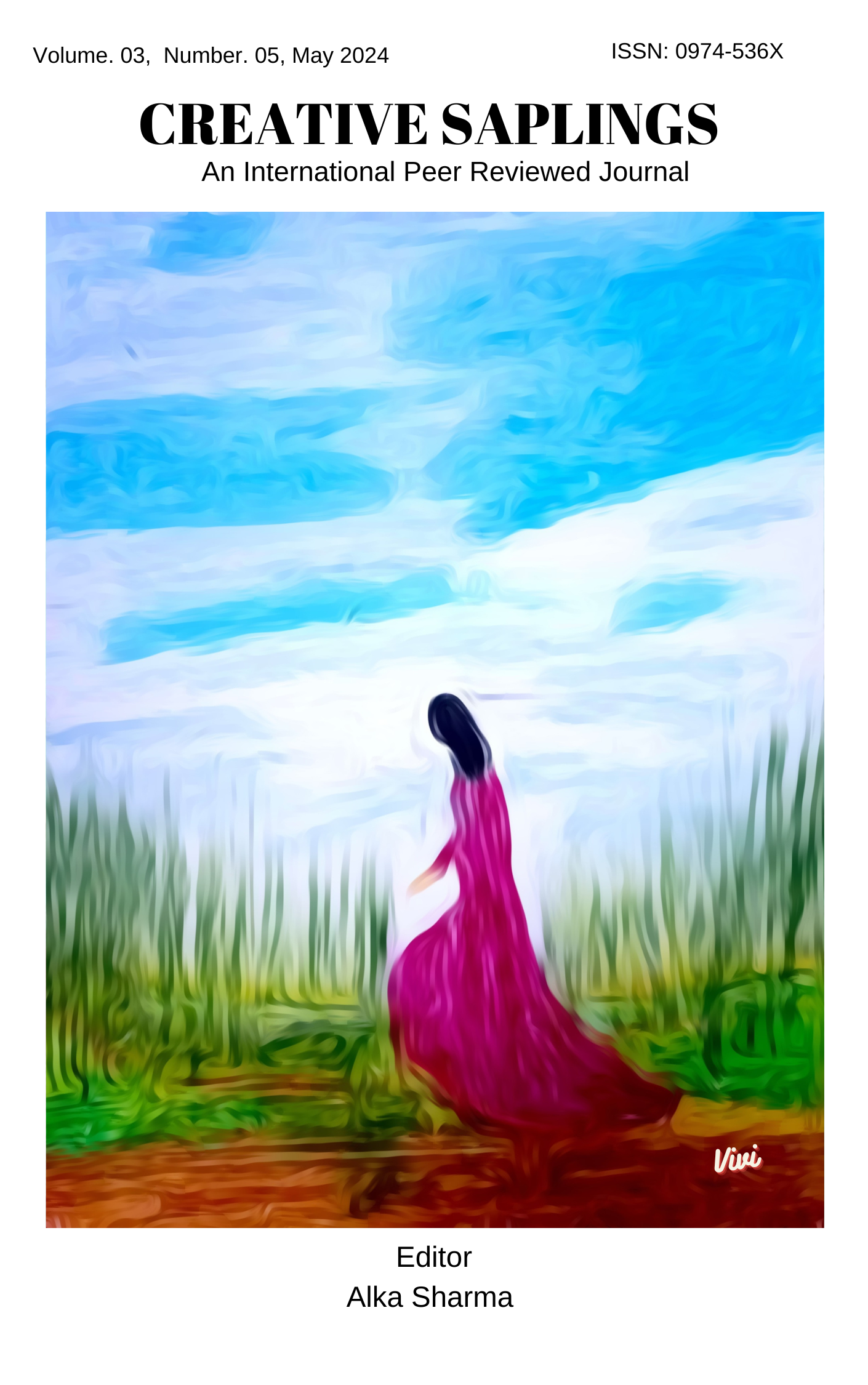The Grammar of the Disabled-Able Agency Construing ‘Hindu Studies’: Perusing the Ashtavakra Gita
DOI:
https://doi.org/10.56062/gtrs.2024.3.5.588Keywords:
Hindu Studies, Ashtavakra Gita, Disability Representation, Linguistic Analysis, Grammatical Frameworks, Religious Narratives, Ability and DisabilityAbstract
The Ashtavakra Gita is a metaphysical treatise by Rishiraj Janaka and the able-disable Sage Ashtavakra in Indian mythology. It spans 20 chapters and 285 shlokas, focusing on the post-human and the disabled-able agency. The text is influenced by Hindu Studies and Indian knowledge systems, and its interconnection of ideas, cohesion, consistency, and logic are key research questions. The study explores themes such as the impact of Hindu Studies on Western literature, tangible and intangible identities, and the concept of province and region. The text also explores themes of femininity, iconography, nationalism, time, and regional poetics. The study also explores cultural paraphernalia, mythology, knowledge, detachment, liberation, and the Adwaita philosophy. The paper will examine how the text constructs and conveys concepts of ability and disability through its narrative and philosophical discourse. Additionally, the paper will analyze the linguistic and grammatical frameworks employed to understand the interactions between disabled and able-bodied characters in the context of Hindu religious and philosophical traditions.
Downloads
References
PRIMARY SOURCE:
• Bart Marshall(tr). Ashtavakra Gita.(e-book) https://acrobat.adobe.com/id/urn:aaid:sc:AP:04153604-2eef-461d-9b75-461f8f1b19c1
SECONDARY SOURCES:
Eds. Blank, Trevor J., and Andrea Kitta (2015). Diagnosing folklore: Perspectives on Disability, Health, and Trauma. Jackson: University Press of Mississippi. ISBN 9781496804259
Littlewood R. ‘Mental Health and Intellectual Disability: Culture and Diversity’, Journal of Intellectual Disability Research, 2006, p. 555–560.
Rev.Eugene a Nida. (www.nytimes.com/2011/09/04/us/04nida.html#:~:text=Nida)
John Keats. Letters. (https://www.poetryfoundation.org/articles/69384/selections-from-keatss-letters)
Eliot, T. S. (10 July 1997). The Sacred Wood and Major Early Essays - Google Book Search. ISBN 9780486299365. Retrieved 28th Feb 24
Plato. The Republic. (https://classics.mit.edu/Plato/republic.html)
NOTES 1:
“The themes of the twenty chapters/cantos of the Ashtavakra Gita go like this, as mentioned by Bart Marshall in his ‘Translator’s Preface’ f the Ashtavakra Gita:
“Chapter 1: It all starts when King Janaka asks the sage Ashtavakra how he can attain Knowledge, detachment, liberation. Ashtavakra tells him.
Chapter 2: It works! Upon hearing Ashtavakra’s words Janaka realizes his true Nature. Enraptured, he describes the joy and wonder of his new state.
Chapter 3: Ashtavakra is delighted for Janaka but sees inconsistencies. He fires off a series of confrontational verses about attachment to worldly pleasure.
Chapter 4: Janaka asserts that the Lord of the Universe can do as he pleases.
Chapter 5: Ashtavakra does not disagree, but in a terse four verses points to the next step—dissolution.
Chapter 6: Janaka says “I know that already,” matching him in style and number of verses.
Chapter 7: Unable to leave it at that, however, Janaka goes on to further describe his enlightened state.
Chapter 8: Still hearing too much “I” in Janaka’s language, Ashtavakra instructs him in the subtleties of attachment and bondage.
Chapter 9: Ashtavakra continues to describe the way of true detachment.
Chapter 10: Ashtavakra hammers away at the folly of desire—no matter how elevated or subtle.
Chapter 11: Ashtavakra further describes the state of desirelessness to which he points.
Chapter 12: Janaka replies by describing the state of timeless stillness in which he now finds himself.
Chapter 13: Janaka, having been instructed by Ashtavakra in Chapter One to “be happy,” reports that he indeed is.
Chapter 14: Janaka then summarizes his exalted state with calm indifference.
Chapter 15: Impressed but not through teaching, Ashtavakra relentlessly points to the vast emptiness of Self.
Chapter 16: Ashtavakra attacks the futility of effort and knowing. Chapter 17: Ashtavakra describes the nature of one who is truly free. Chapter 18: Finally, Ashtavakra hits him with everything he’s got—100 verses of pure non-duality. If this doesn’t do it, nothing will.
Chapter 19: It works! Janaka no longer describes his enlightened state but can speak only in questions revealing absence.
Chapter 20: In a final flurry of questions pointing only at their own meaninglessness, Janaka burns off the last vestiges of personhood and enters dissolution. He ends with: “No more can be said.”
Ashtavakra smiles, nods approvingly, and says no more.”
NOTES 2: MANY TEXTS AND CONTEXTS:(A few Translations of Ashtavakra Gita)
“Brij Nath Lala (1907) opened the discourse of this Gita into the English language in the Office of the Vaishya Hitkari.
Swami Nityaswarupananda has written a word by word translation from 1929 to 1931.
Radhakamal Mukerjee (1889–1968) continued the discourse into English with his work posthumously published in 1971. Stroud (2004) wrote on the Astavakra Gita as a work of multivalent narrative.
The Heart of Awareness: A Translation of the Ashtavakra Gita (Shambhala Dragon Editions) translated by Thomas Byrom, 1990
Swami Chinmayananda ] wrote a commentary on the Ashtavakra Gita, which has references to the Upanishads to help convey the meaning of the text.
John Richards published an English translation of the Ashtavakra Gita in 1997
Osho has given commentary on Ashtavakra Gita in a long series of 91 discourses named as Ashtavakra Mahageeta, given in his Pune Ashram.
Sri Sri Ravi Shankar has given commentary on Ashtavakra Gita in Hindi and English.
Pujya Gurudevshri Rakeshbhai has given commentary on Ashtavakra Gita through 60 discourses totalling more than 116 hours.
The Book has also been translated into Urdu language with the title of Mehak-e-Agahi (2021).”
Downloads
Published
Issue
Section
License
Copyright (c) 2024 Nandini Sahu

This work is licensed under a Creative Commons Attribution-NonCommercial 4.0 International License.





